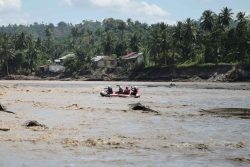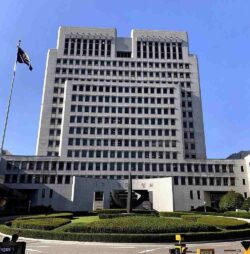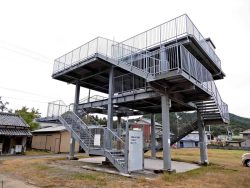Napal: Increased emigration may cause labor shortages in the nation’s food-basket areas
16:21 JST, January 5, 2023
In the last three years, as the coronavirus strangled the economy and rendered tens of thousands jobless, more than 1 million Nepalis left the country to find work in faraway lands.
Analysts say departures may reach that level in just fiscal 2022 as political instability stalls economic growth.
Official statistics show that 347,340 Nepalis had left the country by the first five-month period ended mid-December 2022; and if the momentum keeps up, the 1-million figure isn’t far away, they say.
The exodus of young people from Madhesh and Province 1, in particular, has raised concerns as the two provinces in the Tarai flatlands are known as the country’s food basket. According to the Nepal Labour Migration Report 2022 unveiled recently, they had the highest departures among the seven provinces, sparking fears of possible labor shortages in the farm belt.
Experts say that Nepal’s proliferating imports show it has already turned into a remittance-driven economy from a farm economy.
“We are now totally dependent on imports. That’s the repercussion,” said Chiranjivi Nepal, former governor of Nepal Rastra Bank.
In 2001, Nepal bought food and farm products from next-door neighbor India valued at a paltry $11.84 million. By the last fiscal year, that figure had ballooned to $3 billion.
Over the past few years, food shipments, particularly from India, have turned into a flood, which experts say is a potential threat to national security.
“The major reason behind the dependency is youths going for foreign employment. You have money and you import food,” he said. “The employment crisis is more acute in Madhesh Province.”
The decade-long Maoist conflict from 1996 to 2006, followed by another decade of political instability and then severe power outages, crippled output resulting in slowed economic growth.
Analysts see a grimmer economic outlook as Nepal appears headed for another period of political instability.
Even as Nepal was holding the general elections in November, more than 60,000 Nepalis departed to different labor destinations without waiting to vote.
Around 64,000 labor permits were issued between mid-November and mid-December, according to data from the Department of Foreign Employment.
This shows that Nepalis don’t trust the political parties and their manifestos, which are full of promises that are never carried out.
“The current migration trend will continue until we increase domestic production, earn more foreign currency by selling electricity, begin more development projects and create jobs, and commercialize the agriculture sector,” said economist Nepal.
Remittance is rising and it is good for the economy, but it has many negative impacts.
The Nepal Labour Migration Report 2022 said that Nepali migrant workers were dying in greater numbers. Since 2008-09, a total of 10,666 Nepalis have died working abroad.
Migrant deaths have raised concern as the figure has been rising steeply in the past three years. The number increased from 658 in 2019-20 to 1,146 in 2020-21.
In the 2021 fiscal year, the number of deaths reached an all-time high of 1,395.
The greatest number of migrant deaths in the past three years, 870, occurred in Saudi Arabia among the dozen or so most popular labor destinations among Nepali workers.
According to the report, 817 Nepali workers died in Malaysia, 595 in Qatar and 496 in the United Arab Emirates during the same period. The actual figure could be higher as many migrant deaths go undocumented, observers said.
Heart attack has been cited as a major cause of death among Nepalis in the Gulf countries and Malaysia. Hundreds of young, healthy Nepalis have suffered sudden deaths in foreign lands.
Though such deaths are often termed “natural deaths,” rights activists say that healthy men in the prime of their life, without any major health conditions prior to their departure, suffering cardiac arrest does not constitute “natural death.”
Along with COVID-19, suicide, workplace accidents and traffic accident have been the major causes of death for migrant workers.
“A significant number of Nepalis return home with mild to severe injuries or illness,” the report said.
“The health risks migrant workers face are linked to their exposure to occupational safety and health hazards, poor working and living conditions, lack of access to social protection, including medical and health services, language and cultural barriers, and forced overtime labor, among others.”
While countries like Croatia, Cyprus, the Maldives, Malta, Poland, Romania, Turkey and the United Kingdom have emerged as new labor destinations in the three-year period, the six Gulf Cooperation Council countries — the United Arab Emirates, Qatar, Kuwait, Bahrain, Saudi Arabia and Oman — and Malaysia are still the most preferred destinations.
The number of Nepali women moving abroad has been increasing gradually.
The report said that women accounted for nearly 8% of the labor approvals in the 2021 fiscal year. Of the 630,089 approvals, including new and re-entry, 49,128 were issued to women.
Bagmati came out tops among the seven provinces in terms of women migrant workers applying for jobs abroad.
“The contribution of migrant workers to Nepali society cannot be measured just in monetary terms,” said Fredy Guayacan, an officer in charge of the International Labour Organisation Nepal.
“Labor migration has helped to transform the lives of thousands of people by enhancing their access to education, health and other basic services. While many women migrant workers do not have access to resources and information, they also face restrictions in mobility and stigma after returning from working abroad,” Guayacan said.
“There is a need for gender-responsive policies and programs for addressing their various needs.”
Along with the positive impacts of foreign employment on Nepal’s economy and households, labor migration experts and researchers highlighted the need for ensuring decent jobs, fair and ethical recruitment practices, safe working and living conditions, social security, skill enhancement, effective reintegration and gender equality in labor mobility.
"World" POPULAR ARTICLE
-

8 Japanese Nationals Stranded on Indonesia’s Sumatra Island
-

U.S. Senate Resolution Backs Japan, Condemns China’s Pressure
-

Mozambican Cooking Class Held in Matsuyama, Ehime Pref.; Participants Don Aprons, Bandanas Made from Traditional Mozambique Fabric
-

China to Impose Sanctions on Shigeru Iwasaki, Former Head of Japan’s Self-Defense Forces, Who Serves as Adviser to Taiwan’s Executive Branch
-

South Korea’s Top Court Dismisses Nippon Steel Appeal in Lawsuit over Requisitioned Worker
JN ACCESS RANKING
-

Tokyo Economic Security Forum to Hold Inaugural Meeting Amid Tense Global Environment
-

Keidanren Chairman Yoshinobu Tsutsui Visits Kashiwazaki-Kariwa Nuclear Power Plant; Inspects New Emergency Safety System
-

Imports of Rare Earths from China Facing Delays, May Be Caused by Deterioration of Japan-China Relations
-

University of Tokyo Professor Discusses Japanese Economic Security in Interview Ahead of Forum
-

Japan Pulls out of Vietnam Nuclear Project, Complicating Hanoi’s Power Plans






















